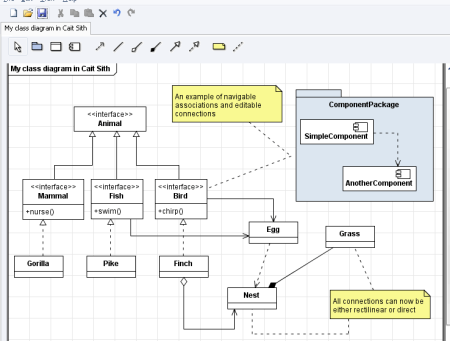I have released Version 0.13 two weeks ago and now I plan to put about four weeks into the next release. The next version number is planned to be a 0.25, because there will be some major enhancements, namely multiple diagrams and a new diagram type: sequence diagrams. Sequence diagrams are what I consider the most difficult of the UML diagram types. The main reason for that is that the interaction seems to be completely different than for the other diagram types. The elements are moved like they are on rails (ha, why don’t I call it “TinyUML on Rails” ? Nah, just kidding)
The first step for me is now to make application configuration more flexible. At the moment, I am pretty involved in my “programming for a living” activities, so I need to do something which is less demanding to relax. So this week is just about offering different ways to deploy TinyUML. I have put it in an Applet first, I haven’t seen that anywhere else so far (even though for Java that is a pretty obvious thing to do), the other configuration I added is Webstart. Being able to run on a variety of platforms and configurations is generally considered as a sign of quality, for me that is a reason to implement desktop applications purely in an object-oriented cross-platform language (e.g. Java, Python, Ruby) and to abandon native code completely. So far, I haven’t missed it, especially with Java it is difficult to find a reason why one would have to use a native library.
I also decided to introduce maintenance branches in my process now that the software has become more complex. By this way, I can release fixes very quickly on the release version without affecting the development (or so I hope).
Another change is to abandon the idea of using Mantis as the tracker tool and to entirely use the sourceforge tracker. While Mantis is a great tool, I believe it is easier to have the tracker hosted within the sourceforge environment.




 Posted by Wei-ju
Posted by Wei-ju 